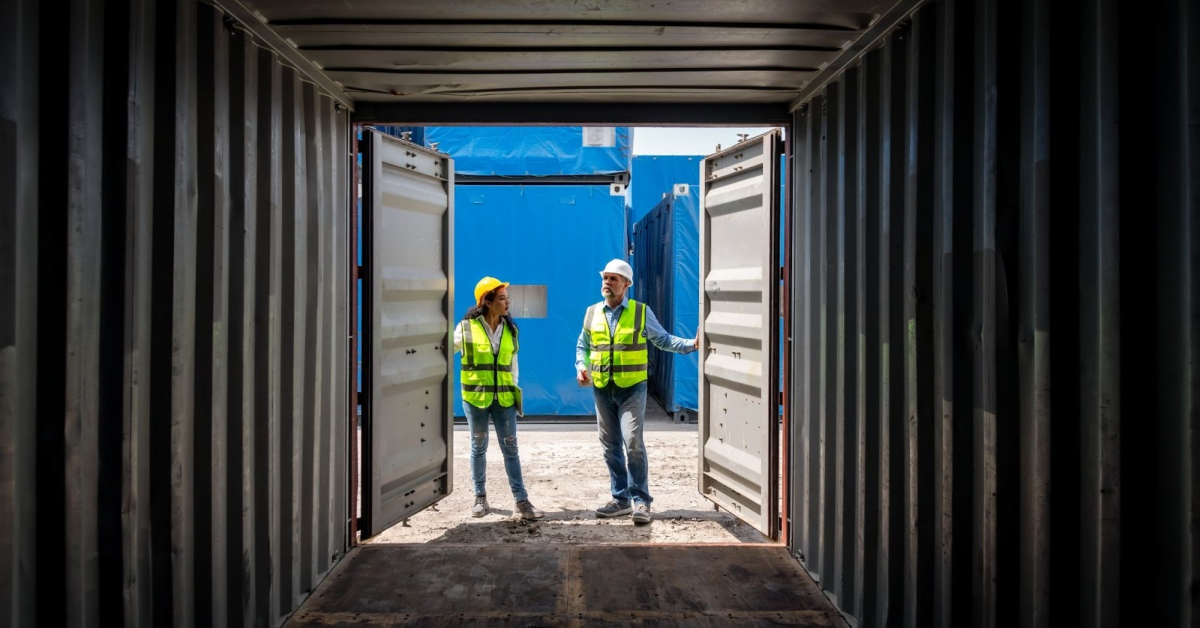- Warehouse rentals often appear cost-effective but come with hidden fees and logistical inefficiencies
- On-site storage options provide more control during seasonal surges
- Off-site storage can slow down operations and increase handling costs
- Shorter, flexible storage cycles are helping retailers stay lean and responsive
If you’ve ever scrambled to find extra space for stock right before peak season, you’re not alone. Plenty of Australian retailers end up turning to warehouse rentals as a quick fix for sudden inventory spikes. At first glance, it makes sense: you pay for extra room when you need it, with no long-term commitment. But dig a little deeper, and it’s clear the numbers don’t always add up.
What starts as a short-term solution can quietly spiral into a recurring cost. You’re paying for access, insurance, transportation, and even idle space you may not use. Worse still, the logistical juggling act of moving stock back and forth can consume staff time and compromise delivery timelines. When margins are already tight, such inefficiency hits hard. That’s why more businesses are questioning whether traditional warehouse rentals truly serve their seasonal needs, or just add another layer of expense.
How alternative storage is closing the flexibility gap
Seasonal inventory doesn’t follow a neat schedule, and neither do customer demands. Retailers that manage frequent stock fluctuations need options that move as quickly as they do. That’s where traditional warehousing often falls short. With rigid contracts and limited access, it’s hard to scale up or down without overcommitting.
Some businesses are now solving that problem by having shipping containers delivered directly to their stores, depots, or event sites. It’s a shift that lets them bypass long-term lease agreements in favour of temporary, on-site storage that matches their needs. Because the containers are portable and secure, they serve as pop-up storage hubs—no third-party facility required. It also means stock arrives exactly where it’s needed, reducing unnecessary freight runs and improving control over inventory flow during high-pressure periods.
The hidden line items that eat into profit
On paper, renting warehouse space for a few months is simple. However, once you’re locked in, the smaller costs start to pile up. Admin charges, security bonds, forklift access, and even penalties for early termination—all of these add to the base rate. Then there’s the cost of moving stock back and forth. Fuel, tolls, time, and wear on vehicles are rarely factored into the initial decision.
And then there’s the question of efficiency. Stock that sits too long in an off-site facility doesn’t just tie up capital—it can lead to missed sales or spoilage, especially in fast-moving sectors. If staff are constantly running between locations, that’s time they’re not spending serving customers or managing floor stock. For small and mid-sized businesses, that disconnect between product and point of sale can quietly erode profit margins with every passing week.
What on-site storage changes for logistics
Maintaining inventory on-site during peak periods significantly impacts the entire workflow. Rather than coordinating with external warehouses or dealing with limited access hours, staff can respond to demand in real time. That means faster restocks, fewer delivery delays, and tighter control over fast-selling lines. When inventory is visible and accessible, it becomes easier to plan, adjust, and act without the lag of third-party coordination.
This setup also simplifies inbound logistics. Drivers can deliver directly to the point of need, thereby avoiding double handling and reducing the risk of damage, particularly in retail, events, or agriculture, where timing is crucial. Having overflow stock just a few metres away instead of kilometres means teams can keep moving even when demand surges unexpectedly. The result is smoother operations without sacrificing speed or space.
Why more retailers are opting for shorter storage cycles
The way businesses manage inventory is shifting. Instead of locking in large spaces for months, many are moving toward a more fluid model, scaling storage up or down based on current demand. This flexible approach is proving especially useful for businesses with seasonal surges, where traditional warehousing often leads to either overspending or underutilisation.
As transport and logistics networks improve across Australia, especially in regional areas, the reliance on static, off-site storage is starting to decline. Businesses are realising they don’t need to be tied to long leases or fixed locations to stay organised. Shorter storage cycles provide the breathing room to adapt quickly, test new stock volumes, and respond to local conditions. It’s a model that works not just for large operations but for any business that needs to move fast without locking up capital in unused space.




